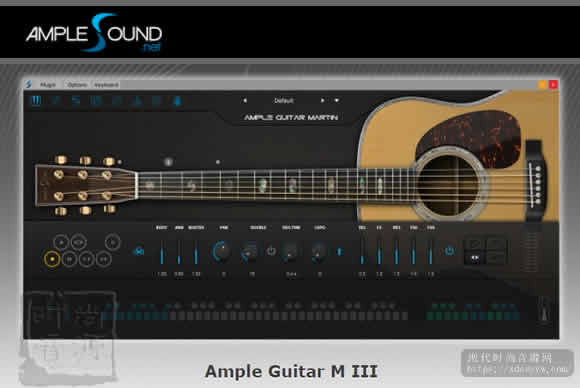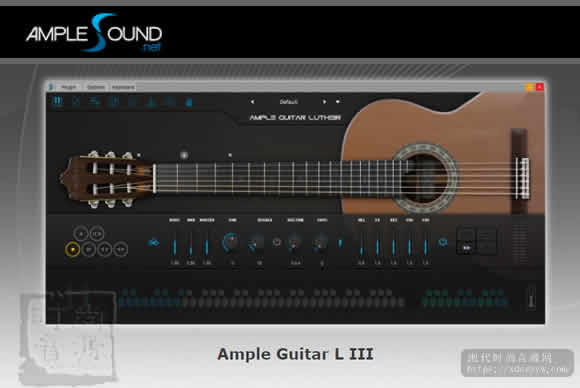![图片[1]-Cinesamples CineStrings Solo v1.3 KONTAKT影视弦乐独奏 | 音色插件资源网-音色插件资源网](https://xdssyyw.com/wp-content/uploads/2021/04/cinesamples.jpg)
软件格式:KONTAKT
厂家:https://href.li/?https://cinesamples.com/product/cinestrings-solo
大小: 46.5 GB
时间:2021年4月8日
CineStrings SOLO 是在洛杉矶索尼影城世界著名的米高梅评分舞台上录制的深采样独奏弦虚拟乐器。补丁包含一些最现实的真乐加托曾经为独奏字符串写作创建。
《CineStrings SOLO》是在洛杉矶索尼电影制片厂世界著名的米高梅评分舞台上录制的。CineStrings SOLO 图书馆由资深传奇人物丹尼斯·桑兹录制和混合,通过一些最伟大的洛杉矶得分音乐家的精湛表演和录音,增强了我们必不可少的 CORE 收藏。此集合将在您的音色板中作为自己的特殊电影声音发挥作用。CineStrings SOLO 是一个明确适合作曲家的独奏弦库,直观、多才多艺,在可用性和声音方面都优美地补充了其前身。
与所有 CineSymy 图书馆一样,CineStrings SOLO 库不要求您购买任何额外的示例播放软件,并且获得与原生乐器的免费 Kontakt 播放器合作的许可。所有你需要的是一个序列器,如逻辑,古巴,数字表演者,现场,专业工具,蛋糕步道,甚至苹果车库乐队,你会启动和运行。您也可以使用 CineStrings SOLO 与您最喜爱的符号软件,如西贝柳斯或结局。
直观图形界面
Cinestrings SOLO 与我们的其他”Cine”系列库一样,具有非常直观且易于使用的图形界面和可快速选择的预设,可以帮助您编写、编程和混合。您可以根据您的特定实践定制这些设置。映射页面可以快速为您设置速度、键切换或 MIDI 连续控制器 (CC) 铰接开关。我们的 Mixer 页面允许您快速访问我们的完整组合或其他三个麦克风位置。”设置”页面允许对每个修补程序进行高级控制,以实现声音设计、编程和其他有用的功能。
什么是在辛斯特林斯独奏?
辛斯特林斯独奏功能深采样独奏补丁:
小提琴 1
小提琴 2
中提琴
大提琴
低音
阐述包括:
标准和埃斯普西沃保持平稳的动态
标准和埃斯普西沃无缝乐高
斯皮卡托 @ 5 – 6xr @ p 通过 f
斯塔卡托 @ 2 – 4xr @ p 通过 f
马卡托 @ 2 -3xr
皮齐卡托 @ 5xr @ p 通过 f
额外的阐述包括:
小提琴 1, 小提琴 2, 维奥拉 – 短斯皮卡托 # 5xrr
小提琴 2, 维奥拉, 低音 – 巴托克 · 皮齐卡托 @ 3xrr
小提琴 1, 小提琴 2, 维奥拉 – 特雷莫洛斯 @ p 到 f
补丁
铰接补丁
默认情况下,我们的基本关节补丁包括斯皮卡托、斯塔卡托、马卡托、莱加托(标准和埃斯普西沃)和维系。一些仪器还包括短斯皮卡托。
真正的莱加托补丁
什么是真正的莱加托?我们为每个仪器的上下范围进行了所有间歇性跳跃的采样。当你玩一个真正的Legato补丁,它立即分析你玩的时间间隔,然后播放适当的过渡跳跃之间的音符。其结果是平稳和现实的乐加托性能。
额外修补程序
一些乐器包括额外的表达,如特雷莫洛和巴托克皮齐卡托(字符串被折回指板),和颤音交叉法德。
Vibrato 十字形 (CC2) 补丁的功能也与真乐加托补丁类似,其附加功能是能够在标准 (STD) 维持和浓缩 (ESP) (更多颤音)之间交叉发速,随时使用 MIDI 参数 CC#2 维持样式。这种增加的灵活性允许您在玩游戏时实时将性传播疾病乐加托过渡与 ESP 维持或 ESP 乐加托过渡与 STD 维持进行混合和匹配。
拆分补丁
我们已将每一个表述都作为单独的补丁。它们源自主表达修补程序,并允许您保存内存空间,例如,如果您只需要一个 Spiccato 和一个维系修补程序。虽然这可能会增加您的曲目数量,但许多作曲家选择加载几个补丁,并通过曲目切换,而不是按键开关或速度。
![图片[2]-Cinesamples CineStrings Solo v1.3 KONTAKT影视弦乐独奏 | 音色插件资源网-音色插件资源网](https://xdssyyw.com/wp-content/uploads/2021/04/204447rlso0zr0rjonjns0.png)
主修补程序
01 小提琴 1 艺术
02 小提琴 1 真乐加托
03 小提琴 1 皮齐卡托
04 小提琴 2 铰青
05 小提琴 2 真乐加托
06 小提琴 2 皮齐卡托
07 维奥拉关节
08 维奥拉真莱加托
09 维奥拉·皮齐卡托
10 大提琴关节
11 大提琴真乐加托
12 大提琴皮齐卡托
13 低音铰字
14 低音真乐加托
15 巴斯·皮齐卡托
额外修补程序
16 室内合奏铰字
17 室内合奏维持
18 室内合奏皮齐卡托
19 室内合奏莱加托 (小)
20 室内合奏莱加托 (大)
21 小提琴 2 巴托克·皮齐卡托
22 维奥拉·巴托克·皮齐卡托
23 巴斯·巴托克·皮齐卡托
24 小提琴 1 特雷莫洛
25 小提琴 2 特雷莫洛
26 维奥拉·特雷莫洛
27 小提琴 1 维布拉托十字法德 (CC2)
28 维奥拉·维布拉托十字法德 (CC2)
29 大提琴颤音交叉法德 (CC2)
30 低音颤音十字形 (CC2)
CineStrings SOLO is a deeply sampled solo strings virtual instrument recorded at the world famous MGM Scoring Stage at Sony Pictures Studios in Los Angeles. The patches contain some of the most realistic True Legato ever created for soloistic string writing.
CineStrings SOLO was recorded at the world famous MGM Scoring Stage at Sony Pictures Studios in Los Angeles. Recorded and mixed by veteran legend Dennis Sands, the CineStrings SOLO Library enhances our essential CORE collection with masterful performances and recordings of some of the greatest LA scoring musicians. This collection will function as an exceptional cinematic voice of its own in your sound palette. An expressly composer-friendly solo string library, CineStrings SOLO is intuitive, versatile and complements its predecessors beautifully in both usability and sound.
As with all CineSymphony libraries, the CineStrings SOLO library does not require you to purchase any additional sample playback software, and is licensed to work with the Native Instrument’s free Kontakt Player. All you need is a sequencer like Logic, Cubase, Digital Performer, LIVE, Pro Tools, Cakewalk, or even Apple GarageBand and you’ll be up and running. You can also use CineStrings SOLO with your favorite notation software such as Sibelius or Finale.
INTUITIVE GRAPHIC INTERFACE
Cinestrings SOLO, as with our other “Cine” series libraries, has a very intuitive and easy to use graphic interface with quickly selectable presets that can help you write, program and mix. You can tailor these settings to your specific practices. The Mapping page can quickly set you up for velocity, key-switching or MIDI continuous controller (CC) articulation switching. Our Mixer page allows you to quickly access our Full mix or the three other microphone positions. The Settings page allows for advanced control over each of these patches for sound design, programming and other useful features.
WHAT’S IN CINESTRINGS SOLO?
CineStrings SOLO features deeply sampled solo patches for:
Violin 1
Violin 2
Viola
Cello
Bass
Articulations include:
Standard and Espressivo sustains with smooth dynamics
Standard and Espressivo seamless legatos
Spiccato @ 5-6xRR @ p through f
Staccato @ 2-4xRR @ p through f
Marcato @ 2-3xRR
Pizzicato @ 5xRR @ p through f
Extra Articulations include:
Violin 1, Violin 2, Viola – Short Spiccato @ 5xRR
Violin 2, Viola, Bass – Bartok Pizzicato @ 3xRR
Violin 1, Violin 2, Viola – Tremolos @ p to f
THE PATCHES
ARTICULATIONS PATCHES
Our basic Articulations Patches by default include Spiccato, Staccato, Marcato, Legato (Standard and Espressivo), and Sustains. Some instruments also include Short Spiccato.
TRUE LEGATO PATCHES
What is True Legato? We sampled all of the intervalic leaps throughout the ranges, upwards and downwards, for each instrument. When you play a True Legato patch, it instantly analyzes the intervals you play, then plays the appropriate transitional leap between the notes. The result is a smooth and realistic legato performance.
EXTRA PATCHES
Some instruments include additional articulations such as Tremolo and Bartok Pizzicato (the string is snapped back onto the fingerboard), and Vibrato Crossfade.
The Vibrato Crossfade (CC2) patches also function similarly to the True Legato patches, with the additional functionality of being able crossfade between the standard (STD) sustain and the espressivo (ESP) (more vibrato) sustain styles at any point using MIDI parameter CC#2. This added flexibility allows you to mix and match a STD legato transition with an ESP sustain, or an ESP legato transition with a STD sustain, all in realtime while playing.
SPLIT PATCHES
We have included every articulation as separate patches. They are derived from the master articulation patches and allow you to save memory space, for example, if you only need a Spiccato and a Sustain patch. While this may increase your track count, many composers choose to have several patches loaded and switch via track instead of keyswitch or velocity.
Main Patches
01 Violin 1 Articulations
02 Violin 1 True Legato
03 Violin 1 Pizzicato
04 Violin 2 Articulations
05 Violin 2 True Legato
06 Violin 2 Pizzicato
07 Viola Articulations
08 Viola True Legato
09 Viola Pizzicato
10 Cello Articulations
11 Cello True Legato
12 Cello Pizzicato
13 Bass Articulations
14 Bass True Legato
15 Bass Pizzicato
Extra Patches
16 Chamber Ensemble Articulations
17 Chamber Ensemble Sustains
18 Chamber Ensemble Pizzicato
19 Chamber Ensemble Legato (Small)
20 Chamber Ensemble Legato (Large)
21 Violin 2 Bartok Pizzicato
22 Viola Bartok Pizzicato
23 Bass Bartok Pizzicato
24 Violin 1 Tremolo
25 Violin 2 Tremolo
26 Viola Tremolo
27 Violin 1 Vibrato Crossfade (CC2)
28 Viola Vibrato Crossfade (CC2)
29 Cello Vibrato Crossfade (CC2)
30 Bass Vibrato Crossfade (CC2)
UNIQUE FEATURES
ADAPTIVE LEGATO
CineStrings SOLO’s True Legato patches feature a brand new adaptive legato engine, built from the ground up. This new engine features extra interface controls, allowing you to tailor the legato response to your own playing style. The legato script in CineStrings SOLO is designed to respond musically to your performance. The engine detects your playing speed and intelligently adjusts the interval speed to match. This means you can play slow, expressive lines and fast runs in a single performance, without touching the speed dial. Additionally, the intensity parameter responds to velocity.
What is “True Legato”? True Legato means that we sampled all of the intervalic leaps throughout the ranges, both upwards and downwards, for each instrument. When you play a True Legato patch, it instantly analyses the intervals you play, then plays the appropriate transitional leap between the notes. The result is a smooth and realistic legato performance.
ENSEMBLE PATCHES
CineStrings SOLO also includes very versatile ‘Chamber Ensemble’ patches (Articulations and Legato). These patches map the instruments across a single keyboard, the ranges of which can be adjusted on the SETTINGS tab of the user interface.
MAPPING
CineStrings Solo includes a brand new mapping area that allows for greater flexibility in customizing composer workflows.
The new mapping system allows for articulations to be blended together, using polyphonic keyswitching or overlapping velocity/CC ranges. This allows for even more flexibility for tailoring CineStrings SOLO to your individual needs. For example, you could combine a Marcato articulation with a Spiccato for a harsh attack. You may add articulations using the + Add Articulation + button and subtract articulations using the X on the right. The Accent Overlay control layers an additional articulation (Marcato, Staccato, Spiccato) over the attack of sustains. Turning on ACCENTED LEGATO adds this layer to the legato transitions.
LEGATO
After much experimentation, we’ve determined that a smoothly connected bow-change style of legato yields the best results when implemented into our system of creating realistic legato instruments. We auditioned many transitions and this is the best sounding. While there are other approaches to legato, the results of those did not meet our standards. Our goal is to create something easy to use and playable right out of the box. We found a balance between flexibility and realism, which may not encompass every type of transition. The bow change legato is the most realistic sounding for our method of recording.
Kontakt Player 5.3.1 or higher
Kontakt (Player) 5.3.1 supports: Stand-alone, VST®, Audio Units, RTAS®
AAX® (Pro Tools® 11 and higher), ASIO, Core Audio®, WASAPI
Native 64-bit support for stand-alone and plug-in versions on both Mac & PC
CineStrings SOLO is compatible with all major DAWs and with other music notation software.


![[三体中国民乐全套 效果器合集] 古风中国风编曲必备 R2R [WiN, MacOSX](40GB+)稳定运行版本-音色插件资源网](https://www.audioba.com/wp-content/uploads/2024/12/20240725195002777-QQ_1721908198947-734x550-1.png)

![[最新Ample吉他3代音色免安装25套合集]Ample Guitar Bass v3.7.0 [WiN, MacOSX](77.1GB+)-音色插件资源网](https://www.audioba.com/wp-content/uploads/2024/11/ample-sound.jpeg)
![[智能自动编曲软件 ]band in a box 2024 中文汉化完整版+安装方法 [WiN](201GB+)-音色插件资源网](https://www.audioba.com/wp-content/uploads/2024/10/Band-in-a-Box-10.jpg)










